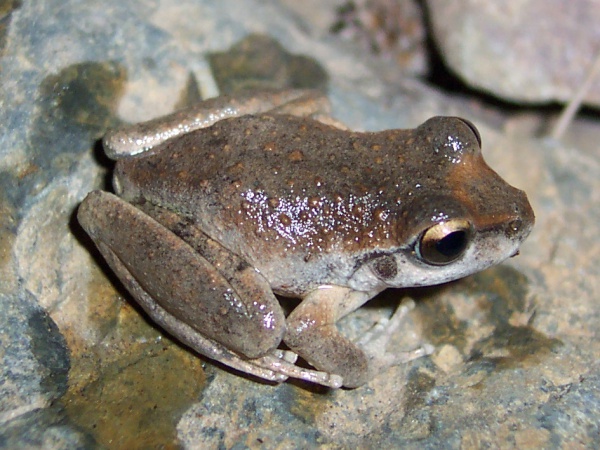Facts About Booroolong frog
The Booroolong frog is a charming, small amphibian native to the Great Dividing Range in New South Wales, Australia. These stream-dwelling frogs grow to about 45 mm in length and display a mix of grey, olive, or brown hues, often accented by pale spots or mottling. Their slightly warty skin and cream-colored bellies are complemented by pale yellow patches on the backs of their thighs and in their armpits. They also have well-developed toe discs and nearly fully webbed toes, making them excellent swimmers.
Once abundant in streams above 200 meters, the Booroolong frog has seen a significant decline in population, especially in the Northern Tablelands of New South Wales. This decline is largely attributed to the introduction of predatory fish species such as trout and the harmful chytrid fungus. These frogs favor rocky, westerly flowing rivers and streams in highland areas, typically surrounded by open woodlands, grasslands, and forests.
From late winter through summer, male Booroolong frogs can be heard making their distinctive "quirk...quirk...quirk" calls from the streamside or bedrock within streams. Female frogs lay approximately 1,300 eggs in a single clump, attaching them to rocks or placing them in still sections of streams. The resulting brown tadpoles, equipped with well-developed mouthparts, undergo metamorphosis in roughly 75 days. This transformation usually occurs in the summer, with young frogs in northern areas averaging around 15 mm in length and those in the south around 22 mm. The juvenile frogs closely resemble their adult counterparts.
